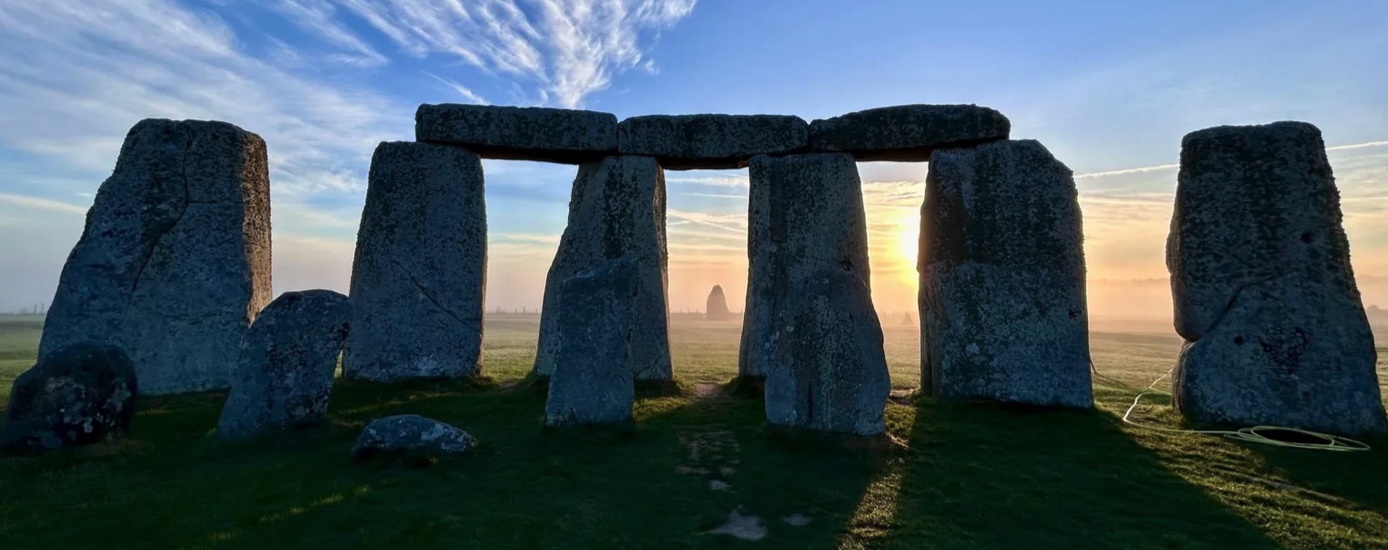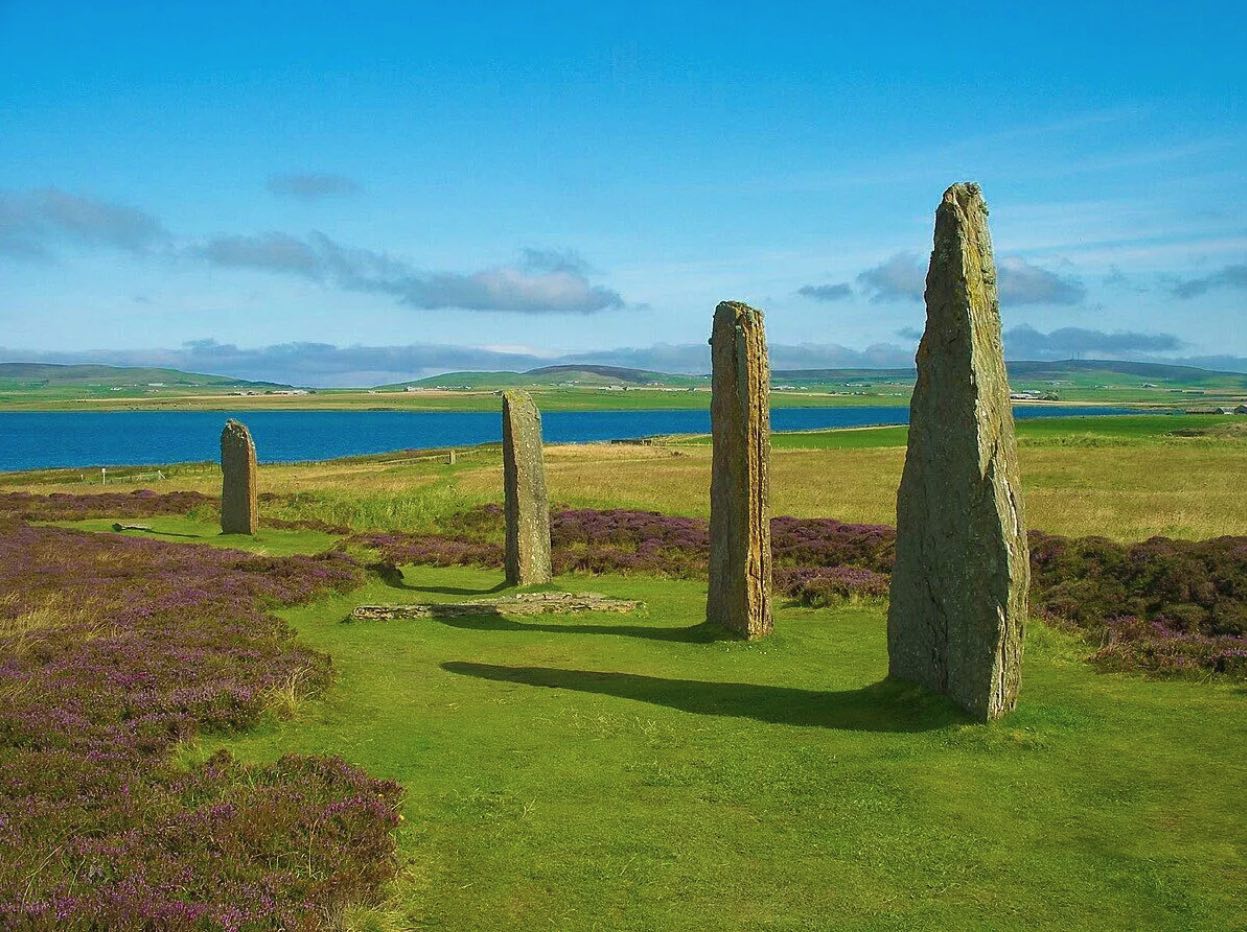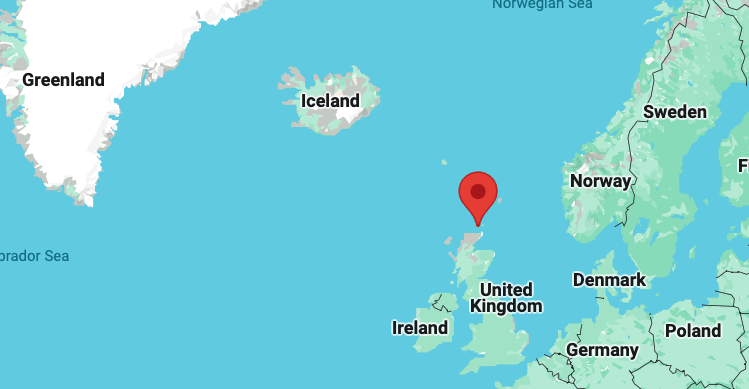
Stonehenge with its Altar Stone (center). Photo by Dawn Pummintr, BBC, and courtesy of English Heritage and Curtin University, West Australia.
When an analysis of the Altar Stone at Stonehenge overturned the previous belief that it originated from Wales, the surprise results led the research team in a new direction. The geological ‘fingerprint’ from the six-tonne slab traced its origin to sedimentary rocks in north-east Scotland, representing a major breakthrough in our understanding of Neolithic settlements across the the UK.
This unexpected find, outlined in a scientific paper published in Nature, "A Scottish provenance for the Altar Stone of Stonehenge," raised the question of how the stone could have been transported from its point of origin to its current position in southern England. Covering a distance of around 430 miles (700 km) this would make it the longest known journey for any stone used in a Neolithic monument. Overland would have been a long and arduous route, making a sea voyage a possibility.
The stones were positioned to line up with the movements of the sun, marking the two most important events in the celestial calendar – the summer and winter solstices.
As part of their long-running studies on Stonehenge’s bluestones, a team led by Richard Bevins of Aberystwyth University, had been investigating the Altar Stone in order to try to determine its source. For a century, it had been classified as a bluestone, but the failure to find a match with the bluestones from west Wales freed the team to explore other areas of Britain.
“This led to the discovery that the Altar Stone was sourced from the Orcadian Basin in northeast Scotland,” said Professor Bevins. “This was an enormous surprise to us, with major implications for our understanding of Neolithic Britain and the connectivity of its peoples.”
A team travelled to Mainland, Orkney’s largest island, to investigate, looking for stones similar in size and rock type to the Altar Stone. Almost all the stone in the Orkneys is Old Red Sandstone from the Devonian period, making it an estimated 400 million years old. A possible link between the sites at Stonehenge and Orkney had already been suggested by similarities in the style of decorated pottery and the architecture of ancient dwellings found in both locations.

The Ring of Brodgar. It is the only major henge and stone circle in Britain which is an almost perfect circle. [o]
THE HEART OF NEOLITHIC ORKNEY
This site incorporates a collection of four UNESCO World Heritage sites, including Skara Brae, a well-preserved Neolithic village in Orkney. The Standing Stones of Stenness are an early example of a stone circle and henge, dating from around 5,000 years ago. Of the original 12 standing stones, only four now remain upright.
The Ring of Brodgar, which may once have comprised 60 stones, now has 36 remaining, of which 21 are still standing. The stones come from several different locations around Orkney’s largest island, Mainland. The ditch around the ring was cut from the bedrock, up to 4 metres deep and 10 metres wide, and dates from around 2,600-2,400 BC.
The circle takes its name from the Old Norse bruargaror, meaning “farm at the bridge”. It is in a spectacular setting, surrounded by low-lying hills and two bodies of water – Harray Loch, which is fresh water, and Stenness Loch, which is brackish (salt) water. Bronze Age settlements were based in the area 1,000 years after the circle was originally built, and cremated bones from this period have been unearthed, indicating that it was used as a burial site.

Inhabited for at least 8,500 years, Orkney was colonised and settled by the Norsemen in 875. [o]
Hundreds of miles away, a long-term burial site was also established where Stonehenge now stands. The first major construction on Salisbury Plain was an early form of henge, consisting of a circular ditch with an inner and outer bank, built around 3,000 BC.
Stonehenge was built at a later date and is generally acknowledged to be the most architecturally advanced example of a prehistoric stone circle in the world. The Sarsen stones, placed at the centre of the site around 2,500 BC, were positioned to line up with the movements of the sun, in particular to mark the two most important events in the celestial calendar – the summer and winter solstices in June and December.
The larger Sarsen stones were erected in the form of an inner horseshoe and an outer circle, with the smaller bluestones set between them in a double arc. Although it is unclear when the Altar Stone arrived at Stonehenge, it is estimated that it may have been placed within the central horseshoe between 2,620 – 2,480 BC. A number of fallen stones at the site have been re-erected and straightened since 1958, but the Altar Stone itself, in the centre of the monument, lies partly buried beneath two Sarsen stones which have fallen on top of it.

Anthony Clarke, a PhD student from Curtin University, contacted team member Professor Nick Pearce regarding a proposed investigation who suggested Clarke might try to obtain ages from minerals in the Altar Stone. [o]
Fieldwork in the Orkney area analysed selected stones at the Ring of Brodgar, the Stones of Stenness monuments, and other samples from across the Mainland of Orkney using portable X-Ray Fluorescence (XRF) equipment. The findings, published in the Journal of Archaeological Science: Reports, showed no match.
“The Altar Stone was not sourced from Mainland Orkney, despite considerable evidence for long-distance communications between Orkney and Stonehenge around 3000/2900 BCE,” the report concludes. Other areas of the ORS Orcadian Basin therefore warranted further investigation, such as parts of Caithness and Sutherland, Aberdeenshire and the Shetland Islands, and this work is currently underway.
“Our chemical analysis and dating work is slowly unlocking this great mystery,” said Professor Bevins. “As we rule out specific areas, the hunt will still very much be on to pin down where exactly in the north-east of Scotland the Altar Stone came from.” While this investigation offers a new trail to follow, the stones stand their ground, as silent sentinels to the past, still guarding secrets yet to be told. ≈ç

ANGELA LORD is the Nature Editor of the Journal of the Wild Culture. Originally from South Yorkshire, England, she studied Modern Languages at university, then worked in print journalism as a news reporter and feature writer. She is now a freelance writer based in Surrey, UK.

Add new comment